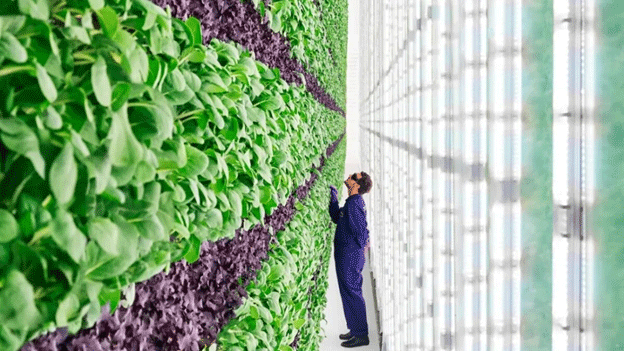As the global population grows and arable land becomes scarce, vertical farming is emerging as a game-changing agricultural method. The ability to grow food indoors, in urban centers or areas previously considered inhospitable, has the potential to revolutionize food production. However, energy consumption, particularly for lighting, remains a critical hurdle. Recent research indicates that intelligent lighting systems could be key to addressing this challenge.
Vertical Farming’s Unmatched Potential
Vertical farming systems allow for the cultivation of healthy crops in controlled indoor environments, making it possible to produce food closer to consumers and in places like deserts, cold regions, or dense urban areas. Dr. Elias Kaiser, whose study was published in Frontiers in Science, highlighted the advantages: “The greatest benefit of vertical farming lies in the ability to grow fresh, nutritious food near consumers in areas where traditional agriculture is impossible.”
This efficiency and proximity could address food security issues, yet electricity costs present a significant obstacle. Lighting, in particular, is a major component of these energy expenses, limiting the scalability of vertical farming. With energy prices fluctuating, finding a cost-effective way to manage power consumption is critical.
A New Approach to Light Management
Traditional vertical farming setups maintain stable environmental conditions, but recent studies suggest these constant settings may be inefficient. Research led by Professor Leo Marcelis from Wageningen University proposes a dynamic approach, where environmental factors like light intensity are adjusted based on plants’ physiological needs. This not only enhances energy efficiency but also promotes healthier plant growth.
Professor Marcelis explained, “Our strategy leverages plant rhythms on daily and developmental timescales, optimizing their environment to maximize growth. We combine plant physiology knowledge, new sensing technologies, modeling, and crop varieties bred specifically for vertical systems.” This research points to how a nuanced understanding of plant biology can inform energy-saving strategies.
The Role of Light Optimization
Lighting influences numerous biological processes in plants, making it a critical factor for successful indoor agriculture. Because lighting accounts for a significant portion of energy usage, it also offers a considerable opportunity for optimization. By understanding the impact of different wavelengths and light intensities, farmers can tailor lighting schedules to plant needs, minimizing energy waste.
Professor Marcelis mentioned, “The fluctuating cost of electricity can be advantageous for vertical farms. Using more energy when it’s cheaper and reducing usage during expensive periods can drive savings.” His research team developed an intelligent lighting model that maintains photosynthesis rates while cutting energy costs by 12%. This algorithm adjusts light intensity throughout the day to match the optimal energy-to-growth balance, achieving energy savings without compromising carbon fixation in plants.
Challenges on the Horizon
Despite these promising developments, there are still challenges to scaling vertical farming to meet global food demands. Dr. Kaiser cautioned, “Many proposed solutions have been tested only on small scales—what works for individual plants has yet to be proven for entire crops in a vertical farm setting.” Additionally, dynamically adjusting variables like airflow, temperature, and CO₂ levels presents further opportunities to improve energy efficiency.
To successfully implement these systems, farmers will require advanced sensors and algorithms capable of real-time environmental monitoring and adjustment. There is also a need for plant varieties specially bred for vertical farming, focusing on traits like optimal growth in controlled environments rather than traditional field resilience.
Professor Marcelis concluded, “In vertical farms, all growing conditions can be precisely managed, which is key to maximizing yield, quality, and resource efficiency. However, maintaining constant settings is not always the best approach. With dynamic environmental control, energy consumption and associated costs can be significantly reduced, enhancing both the sustainability and profitability of vertical farms.”












